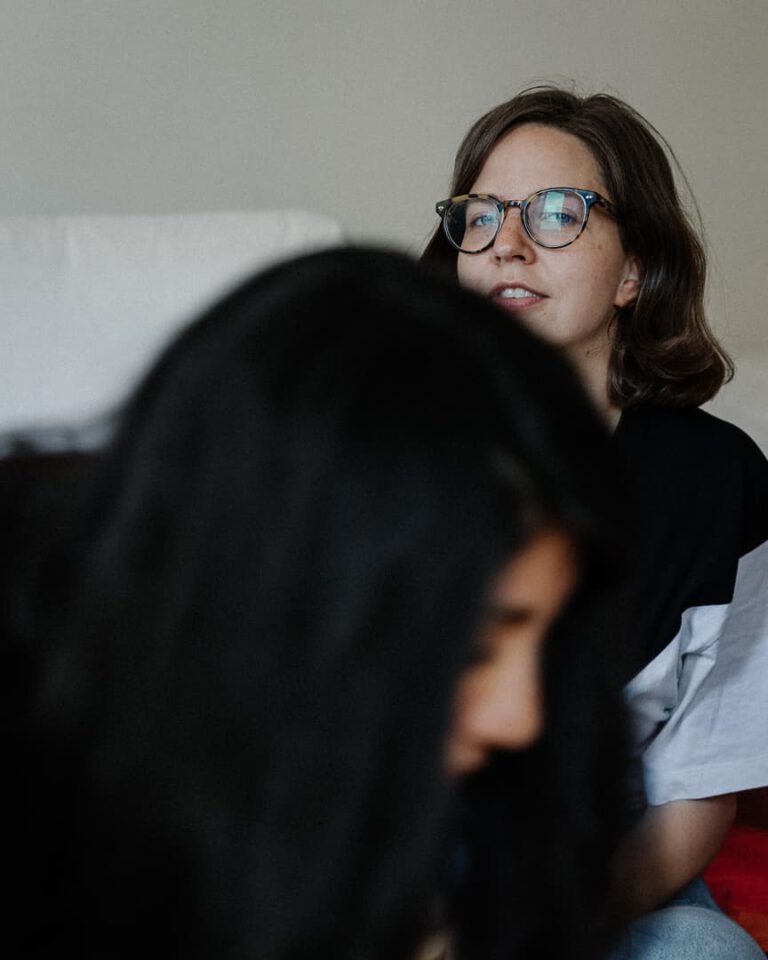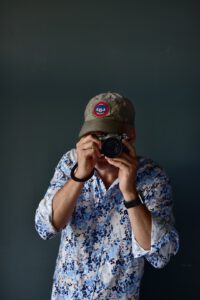Photography is a key component of personal branding. As a solo entrepreneur, you want to effectively communicate your brand message, values, personality and unique selling points. Here’s a comprehensive guide on what you need to know and how to brief your photographer for your personal brand photography.
1 Why personal brand photos at all?
Hand on heart, whether you like it or not, attention spans are more valuable than gold in the digital age. And pictures say more than a thousand words and, above all, they say it quickly. So why use a thousand words when one picture is enough? We live in a highly visually oriented world in which we – your users – tend to process content faster and remember it better with appealing images. In other words, a good photo evokes emotions, tells a story and makes us want to find out more.
Personal Brand Photography aims to achieve just that. It paints a picture of who you are, what your company stands for and most importantly connects with your audience on a personal level. Just like a favorite song reminds you of a special moment, a well-designed image can evoke emotions and associations that are linked to you and your brand.
Three aspects are particularly important here:
- Identity – …reflect you, your personality, your values, products, services.
- Connection – …create a connection with potential customers by making your brand more tangible to prospects.
- Consistency – …maintain your style, color scheme, theme throughout for your personal brand recognition.
2. the most important step: Define your personal brand
Before you look for a photographer you should – no – you must have a clear understanding of your personal brand. It’s like planning a trip – you wouldn’t necessarily set off without knowing your destination.
- What is your brand message? What makes your brand special and how do you want to communicate this in images?
- What is your brand personality? How would you describe your brand in a few words? Is it serious, playful, professional or casual?
- Who is your audience, your target group? Who are your ideal customers? What kind of images appeal to them? Remember, you’re not trying to win a photo contest, you’re trying to connect with your customers.
- What makes them different? In a world full of duplicates, what makes your brand special? What sets you apart from your competitors? Who is your competition?


3. preparation for the photo shoot
The better you prepare for your photo shoot, the better your results will be. Here are some thoughts you can follow.
- Outfit: Your wardrobe should speak volumes about your brand. Is your brand more buttoned up or casual chic?
- Location: Your locations should also be a reflection of your brand. This could be your cozy home office, the cool café down the street where you like to work from time to time or simply enjoy your time. This should also be the place where your services or products are used.
- Accessories: A good prop is like a supporting actor. It can help tell your brand story. Maybe it’s your beloved coffee mug, a special tool, a sketch pad or even your beloved pet. Let things tell you something about yourself and your brand.
4. the briefing for the photographer
To get the most out of your personal brand photo session, you should know your needs and expectations and communicate them clearly.
The key points that a good briefing should cover are:
- Your brand story: Information about your business, values, mission and vision.
- Your goals: State clearly what you want to achieve with these photos.
- Your audience: Find out about your target group and what style they might appreciate.
- Your style: Discuss color palettes, mood and the type of photography you prefer (candid, posed, lifestyle, etc.).
- Your shot list: Specify a list of specific shots you need, including portraits, action shots, lifestyle images and product images.
- Your intended use: Where will the images be used? Website, social media, print? Which formats are required?
A good personal brand photographer will always want to know these points from you. If something is not quite clear, he will ask. If not, you’d better find another photographer. Exactly these details – brand, target group, style, shot list, locations, times, outfits, … – decide whether your personal brand shoot will deliver good results or not.
Here’s a tip: Zsu Szabo – a good friend and great photographer – describes what you should look out for when choosing your personal brand photographer in a top blog article: Good photographer: 17 tips on what you should look out for.
5. post-processing and use
Sounds trivial and is actually not a big deal, but should be clarified beforehand. To avoid any nasty surprises, ask about the following points:
- Editing and retouching: Define your expectations for editing and retouching. Some photographers include this in their packages, while others charge additional fees per image. How many pictures will you end up with?
- Delivery format: How and in which format would you like your photos to be delivered? As a download? In high resolution for print and in lower resolution, prepared for use on the web?
- Rights of use: Make sure that you obtain the commercial rights of use for the photos. Many photographers allow unrestricted use, but it is always good to clarify this in advance so that you are not confronted with additional claims later.
Conclusion
As is so often the case in life and work, to summarize, effective personal brand photography is based on preparation, clear communication with your photographer and consistency in the presentation of your brand. Your photos should authentically represent you and your business and appeal to your target group.
Remember that you’re not just having a few good photos taken. You want to tell your brand story. And like any good story, it needs a bit of thought, planning and a great storyteller to get it across really well – in this case, your personal brand photographer.

